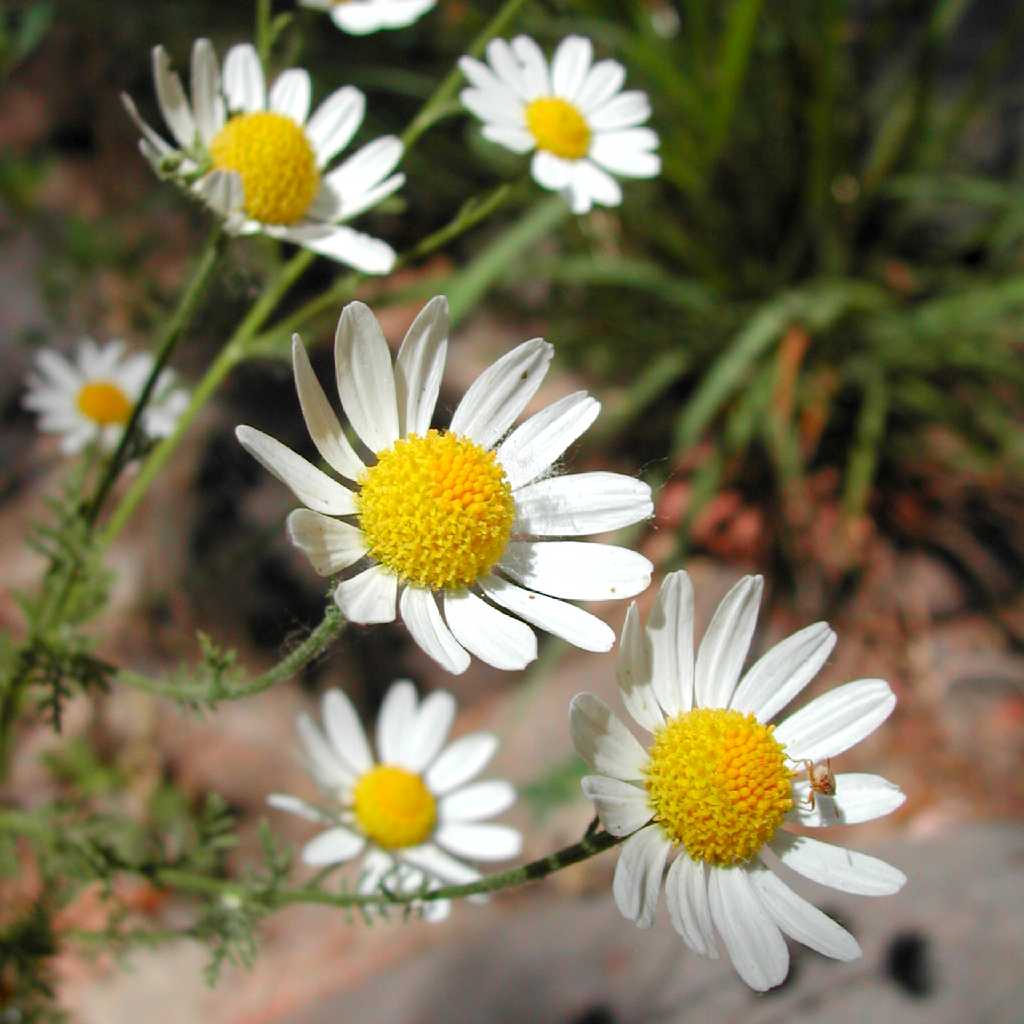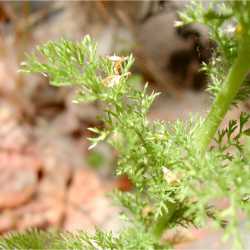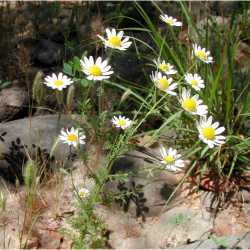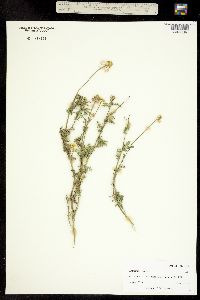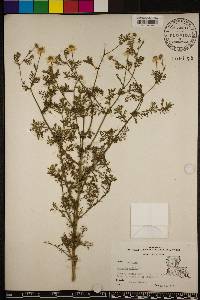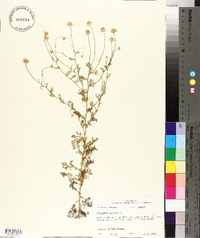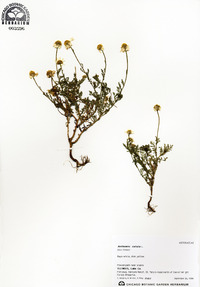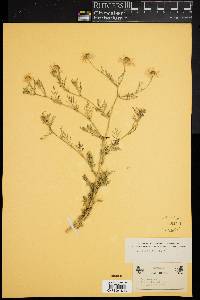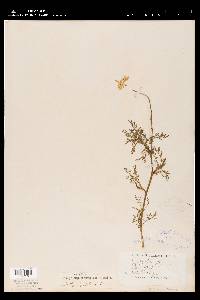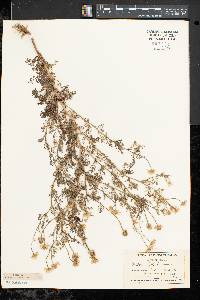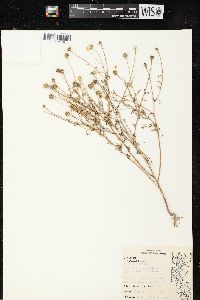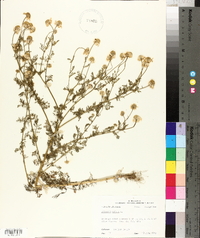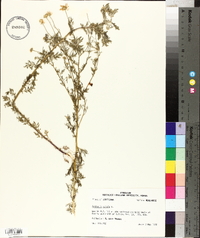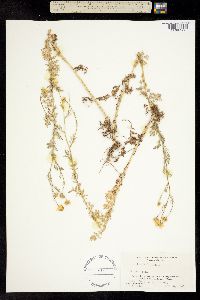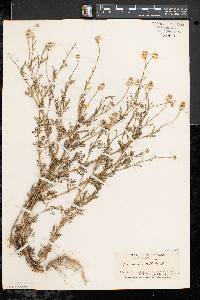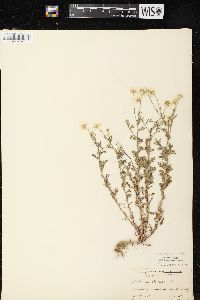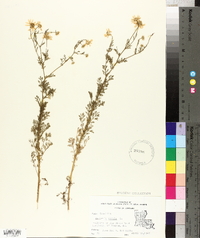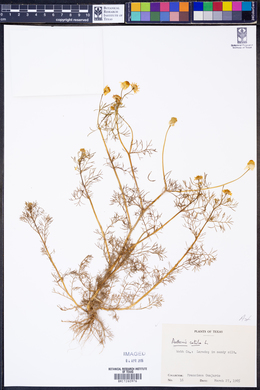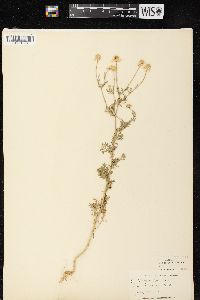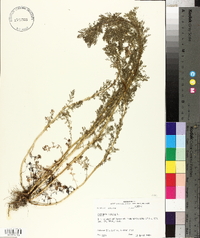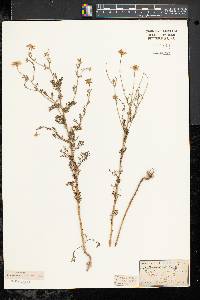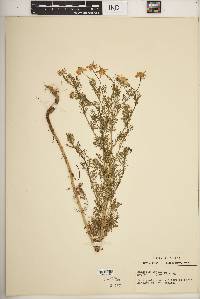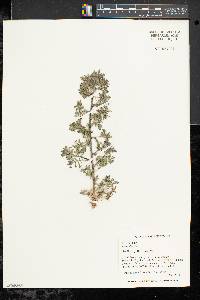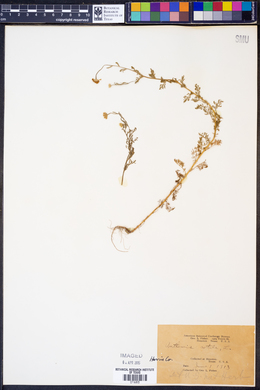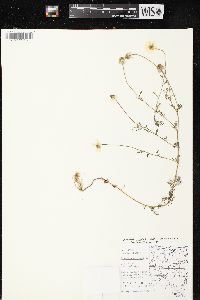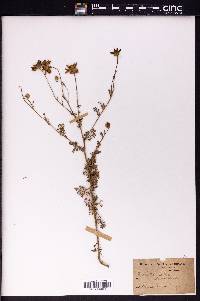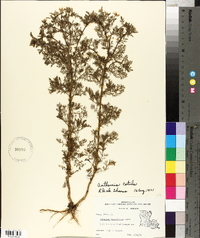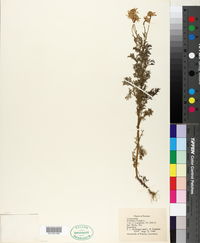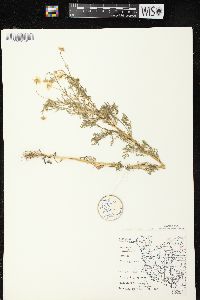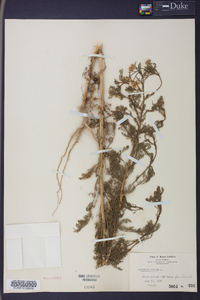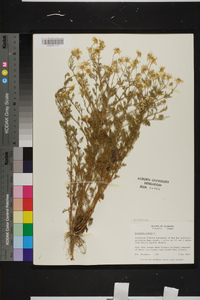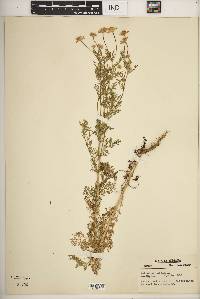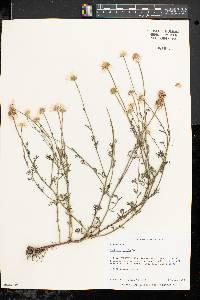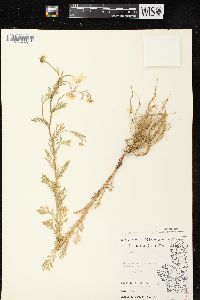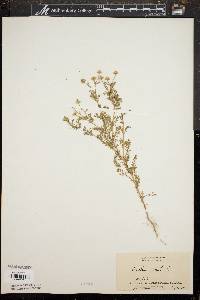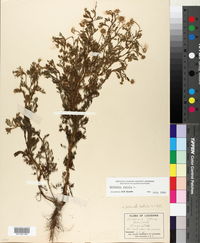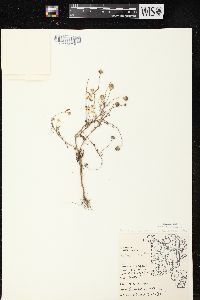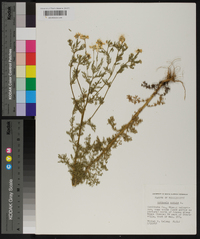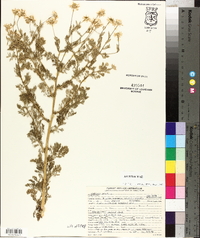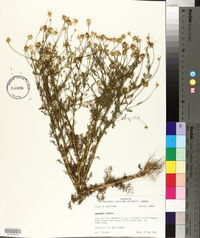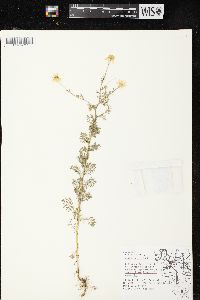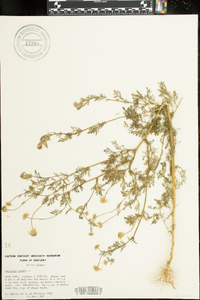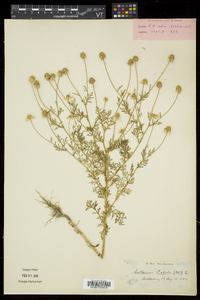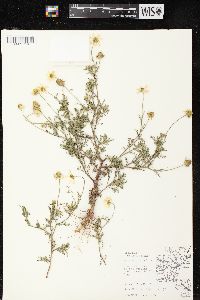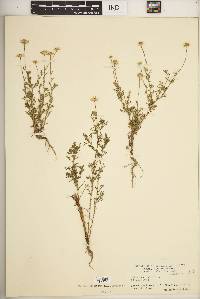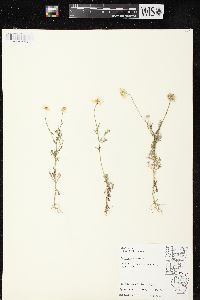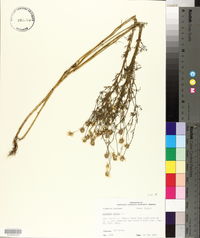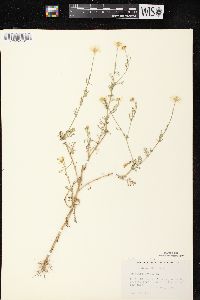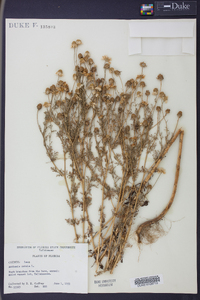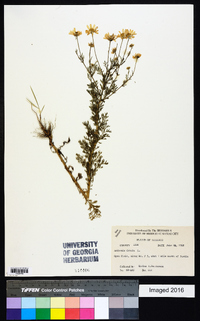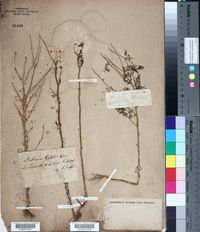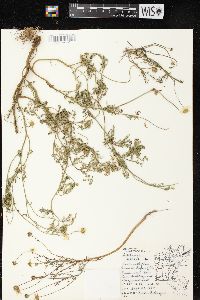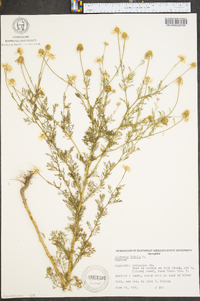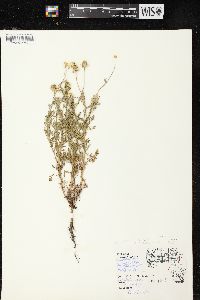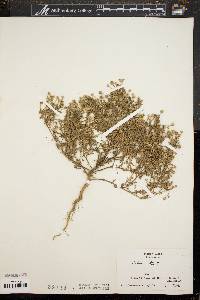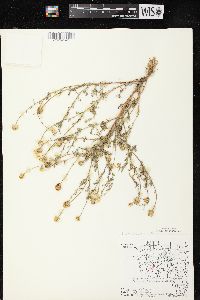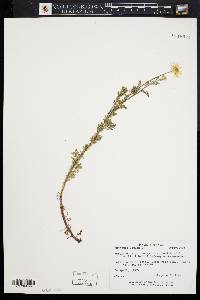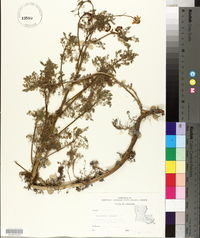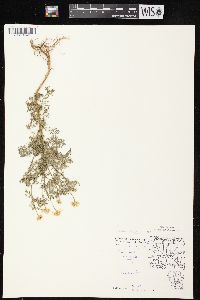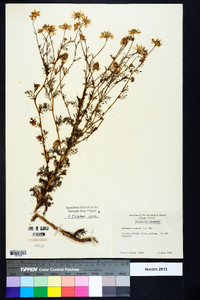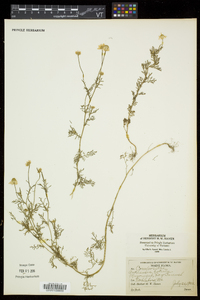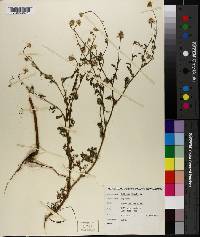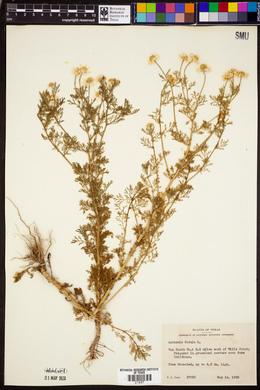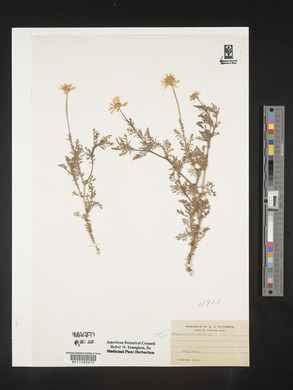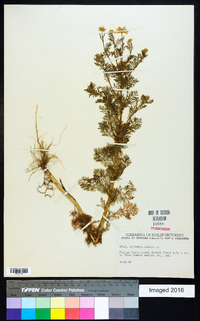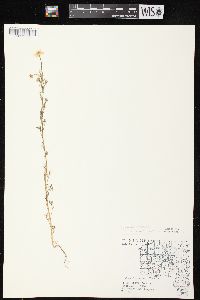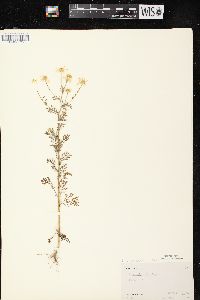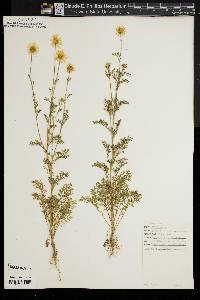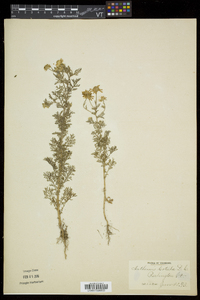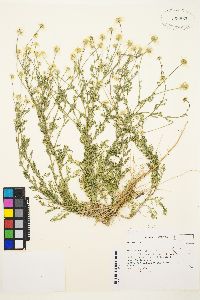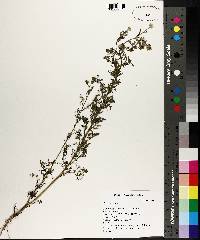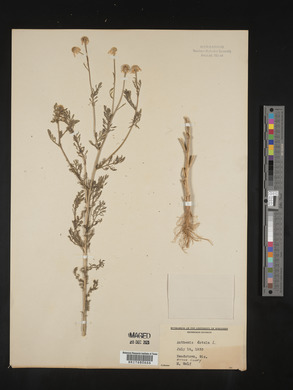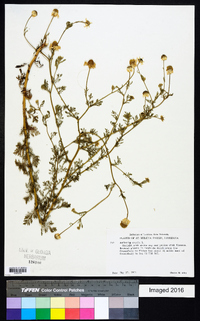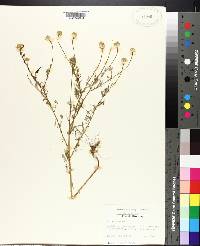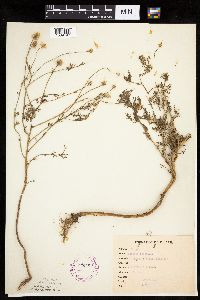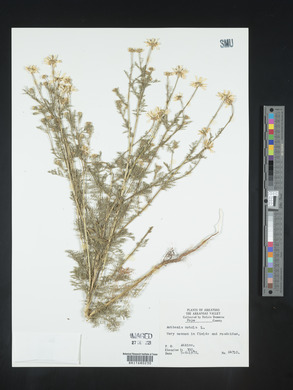
|
|
|
|
Family: Asteraceae
Stinking Chamomile
[Maruta cotula (L.) Dc.] |
Annuals, (5-)15-35(-90) cm, usually ill-scented. Stems green (sometimes red-tinged), usually erect, branched mostly distally or ± throughout, glabrous, glabrate, puberulent, or sparsely strigillose to strigoso-sericeous (glabrescent, hairs mostly medifixed) and gland-dotted. Leaf blades 25-55 × 15-30 mm, 1-2-pinnately lobed. Peduncles mostly (2-)4-6(-15) cm. Involucres 5-9 mm diam., ± villosulous to arachnose. Receptacles paleate mostly distally; paleae subulate to acerose 2-3+ mm (often gland-dotted). Ray florets 10-15, styliferous and sterile; corollas white, laminae 5-15+ mm. Disc corollas 2-2.5 mm (sparsely gland-dotted). Cypselae 1.3-2 mm, ribs ± tuberculate (furrows often gland-dotted); pappi 0. 2n = 18. Flowering (Apr-)May-Aug(-Oct). Disturbed sites, clearings, fields, roadsides; 10-600(-1500+) m; introduced; Alta., B.C., Man., N.B., Nfld. and Labr. (Nfld.), N.S., Ont., P.E.I., Que., Sask., Yukon; Ala., Alaska, Ariz., Ark., Calif., Colo., Conn., Del., D.C., Fla., Ga., Idaho, Ill., Ind., Iowa, Kans., Ky, La., Maine, Md., Mass., Minn., Miss., Mo., Mont., Nebr., Nev., N.H., N.J., N.Mex., N.Y., N.C., N.Dak., Ohio, Okla., Oreg., Pa., R.I., S.C., S.Dak., Tenn., Tex., Utah, Vt., Va., Wash., W.Va., Wis., Wyo.; Eurasia. Anthemis cotula is a weed throughout North America.
General: Introduced annual with a disagreeable odor, 10-90 cm tall; stems erect, branched above or throughout, green, sometimes red tinged; herbage glabrous or sparsely pubescent and gland-dotted; taprooted. Leaves: Mostly cauline, alternate, 1-2 pinnately lobed, 1-6 cm long, 1.5-3 cm wide, dissected into narrow segments, surfaces with long, soft hairs and gland-dotted. Flowers: Heads mostly solitary (rarely 2-3), barely surpassing the basal leaves, staminate and pistillate flowers on separate plants; phyllaries densely tomentose towards the base, tips white; disk flowers only; involucre of staminate heads 5-7.5 mm long, corolla 2.5-4.5 mm long; involucre of pistillate heads 6-10 mm long, corolla 3.5- 5.5 mm long; flowers May-August. Fruits: Achene, 1.3-2 mm long, somewhat round or nearly 4-angled, 10-ribbed, gland-dotted in the furrows; pappus absent. Ecology: Roadsides, streams, ditches, fields, waste places; 800- 2400 m (2500-8000 ft); Cochise, Coconino, Maricopa, Pima, Pinal, and Yavapai counties; widespread throughout North America. Notes: Leucanthemum vulgare (oxeye daisy) [=Chrysanthemum leucanthemum] is an introduced perennial, 10-80 cm tall; basal leaves are spatulate or obovate, 1.2-3.5 cm long, margins pinnately lobed and/or irregularly toothed; cauline blades are reduced, oblanceolate, spatulate, to linear. Heads solitary or 2-3, with 15-35 white ray flowers and numerous yellow disk flowers. It typically occurs in disturbed habitats, meadows, roadsides, and open areas. Tanacetum vulgare (common tansy) is an introduced perennial, 40-150 cm tall, with erect, branched stems; basal and cauline leaves are oblong, ovate, or elliptic in outline, 2-10 cm long, pinnately lobed; heads several, arranged in compact corymb-like arrays; ray flowers absent; disk flowers numerous, yellow. It typically occurs in disturbed sites, having escaped from cultivation. Stinking chamomile has numerous tribal uses outside the region. It is used for epilepsy, rheumatism, asthma, diarrhea, vomiting, fever, and stomach cramps, and as a tonic and blood purifier. Editor: Springer et al. 2008 Taprooted, usually subglabrous, malodorous annual 1-9 dm; lvs 2-6 cm, 2-3 times pinnatifid, with narrow segments; heads short-pedunculate, the disk 5-10 mm wide, becoming ovoid or short-cylindric at maturity; invol sparsely villous; rays mostly 10-16, sterile and usually neutral, white, 5-11 mm; receptacle chaffy only toward the middle, its firm, narrow, subulate bracts tapering to the apex; achenes subterete or nearly quadrangular, obscurely ca 10-ribbed, strongly glandular-tuberculate; 2n=18. Fields and waste places; native of Europe, now a cosmopolitan weed. (Maruta c.) Gleason, Henry A. & Cronquist, Arthur J. 1991. Manual of vascular plants of northeastern United States and adjacent Canada. lxxv + 910 pp. ©The New York Botanical Garden. All rights reserved. Used by permission. From Flora of Indiana (1940) by Charles C. Deam This species is doubtless found in every county of the state. It is usually found in waste grounds about habitations. It is also found along roadsides and in fallow fields and waste places in general. I can remember that, when I was a boy, every barnyard was white with dogfennel during its season of flowering, as were most roadsides which, at that time, were new, rich earth. In recent years one rarely sees this species. I have no scientific data concerning its distribution, but I believe it is fluctuating in its abundance. It had almost disappeared until a few years ago when it began to reappear, and now it seems to be becoming abundant. I have discussed this subject with other observers and they agree in the preceding observation. ...... Indiana Coefficient of Conservatism: C = null, non-native Wetland Indicator Status: FACU Diagnostic Traits: Malodorus; leave finely dissected; rays white, sterile; receptacle with chaff; achenes +/- round in cross-section, glandular. |
This project was made possible in part by the Institute of Museum and Library Services [MG-70-19-0057-19].
Powered by Symbiota

